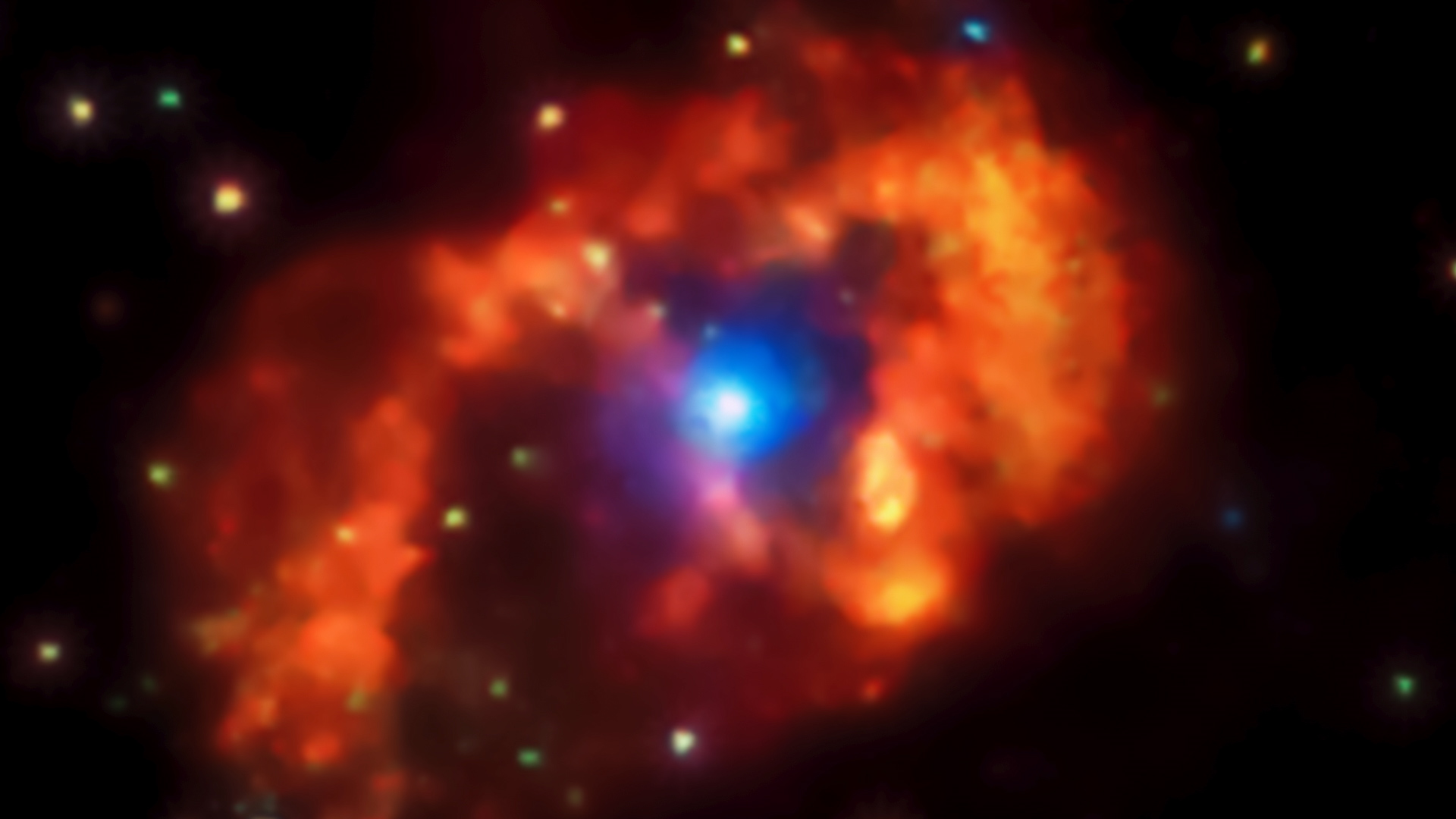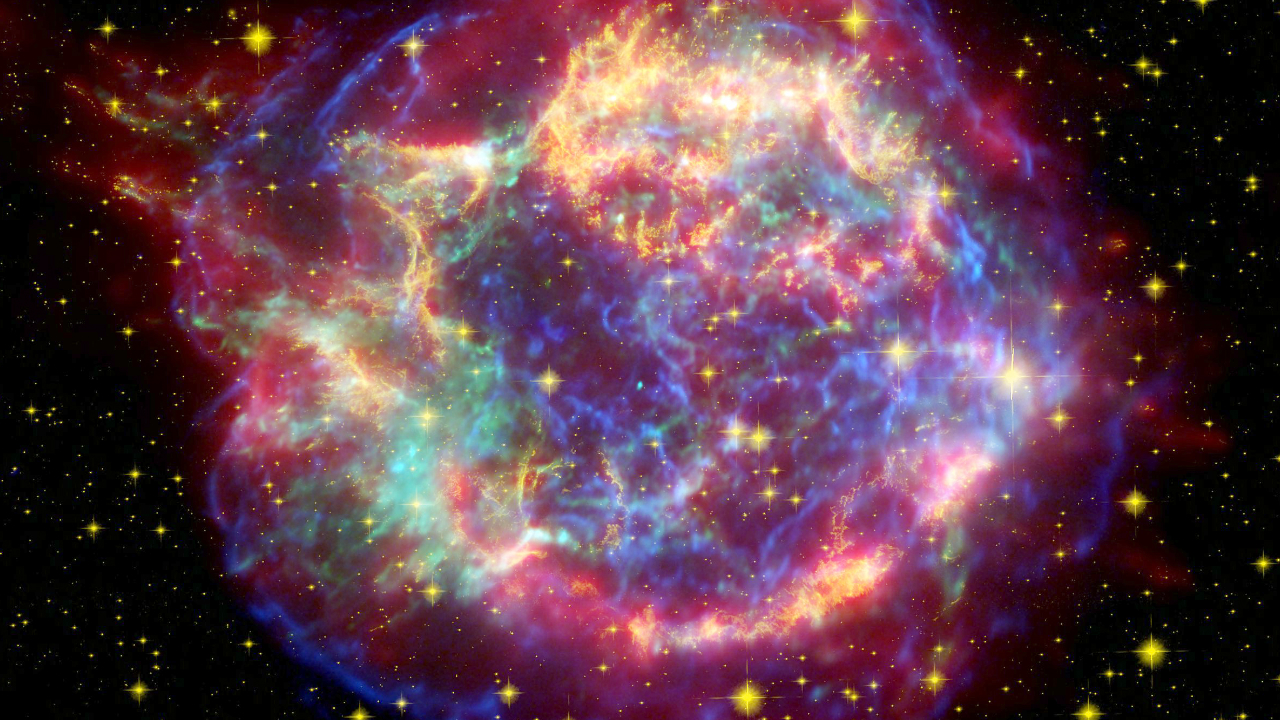NASA’s Fermi Confirms 'PeVatron' Supernova Remnant
Explore how astronomers located a supernova remnant that fires up protons to energies 10 times greater than the most powerful particle accelerator on Earth.
Credit: NASA’s Goddard Space Flight Center
Music: New Philosopher by Laurent Dury; Universal Production Music
Watch this video on the NASA Goddard YouTube channel
Complete transcript available.
A study using 12 years of data from NASA’s Fermi Gamma-ray Space Telescope confirms that one supernova remnant is producing some of the highest-energy protons in our galaxy.
Theorists say the highest-energy cosmic ray protons in the Milky Way reach a million billion electron volts, or petaelectronvolt (PeV) energies. But the precise nature of their sources, which astronomers call PeVatrons, has been difficult to pin down.
Fermi has shown that the shock waves of exploded stars boost particles to speeds comparable to that of light. Called cosmic rays, these particles mostly take the form of protons, but can include atomic nuclei and electrons. Because they all carry an electric charge, their paths become scrambled as they whisk through our galaxy’s magnetic field, which masks their origins. But when these particles collide with interstellar gas near the supernova remnant, they produce a tell-tale glow in gamma rays — the highest-energy light there is.
Out of about 300 known supernova remnants, only a few have been found to emit gamma rays at energies high enough to potentially be PeVatrons. One is G106.3+2.7, a comet-shaped cloud located about 2,600 light-years away in the constellation Cepheus. A bright pulsar caps the northern end of the supernova remnant, and astronomers think both objects formed in the same explosion.
Fermi and ground-based gamma-ray observatories have detected billion- (GeV) and trillion-electron-volt (TeV) gamma rays in the tail of the remnant, away from the pulsar. By combining 12 years of Fermi observations, astronomers were able to confirm that the highest-energy gamma rays coming from the remnant must be the result of protons boosted to PeV energies — meaning that G106.3+2.7 is a PeVatron.

Observations from NASA's Fermi Gamma-ray Space Telescope (magenta and pink) confirm that a supernova remnant called G106.3+2.7 is responsible for accelerating some of the highest-energy protons in our galaxy. In this multiwavelength view, radio emission from the remnant is blue and green, while yellow, orange, and red reveal radio waves from a vast cloud of interstellar gas. At center, the pink region shows where protons boosted by the supernova's shock wave strike the gas, emitting a tell-tale glow of gamma rays. Twelve years of Fermi data were crucial in identifying the particles as protons.
Credit: Jayanne English (University of Manitoba), NASA/Fermi/Fang et al. 2022, and Canadian Galactic Plane Survey/DRAO/FCRAO

Radio observations at 408 and 1,420 megahertz, shown in blue and green, reveal the diffuse glow of supernova remnant G106.3+2.7. Pulsar J2229+6114 is located below the bluish semicircle at the top left of the remnant. This structure, called the Boomerang pulsar wind nebula, is formed by energetic particles and their associated magnetic fields flowing away from the pulsar.
Credit: Jayanne English (University of Manitoba) and Canadian Galactic Plane Survey/DRAO

Astronomers can tease out new sources by comparing their observations with what would be expected based on a model of the region's gamma-ray background that accounts for all known emission. Above 10 billion electron volts, where the pulsar's signal produces much less interference, a patch of excess gamma-ray emission, here shown in pink, appears in the tail of the supernova remnant. This emission is created when protons accelerated in the supernova's shock wave strike a nearby gas cloud. To produce the 100 trillion-electron-volt gamma rays detected by ground-based observatories, these protons must reach energies 10 times greater, making this source a PeVatron.
Credit: Jayanne English (University of Manitoba) and NASA/Fermi/Fang et al. 2022

Radio observations at 408 and 1,420 megahertz, shown in blue and green, and excess gamma rays above 10 billion electron volts, shown in pink, are merged in this image.
Credit: Jayanne English (University of Manitoba), Canadian Galactic Plane Survey/DRAO, and NASA/Fermi/Fang et al. 2022

Radio observations show a cool, dense gas cloud located near the supernova remnant. This image shows emission from carbon monoxide — an important molecule for tracing interstellar gas — in yellow, orange, and red based on differences in its motion, better revealing the cloud's structure. The emission has a rest frequency of 115.27 gigahertz, corresponding to a wavelength of 2.6 millimeters.
Credit: Jayanne English (University of Manitoba) and Canadian Galactic Plane Survey/FCRAO
Confined by a supernova remnant's chaotic magnetic field, high-energy particles move around randomly. Sometimes they cross the shock wave, and with each round trip, they gain a fraction of their original energy. After dozens to hundreds of crossings, the particles are moving near the speed of light and are finally able to escape.
Credit: NASA's Goddard Space Flight Center
Because cosmic ray protons, nuclei, and electrons carry electric charge, their direction changes as they wend their way through the galaxy's magnetic field. By the time the particles reach us, their paths can be completely scrambled, and astronomers cannot trace them back to their sources. Gamma rays — including those produced by cosmic rays interacting with interstellar matter — instead travel straight to us from their sources.
Credit: NASA's Goddard Space Flight Center
For More Information
Credits
Please give credit for this item to:
NASA's Goddard Space Flight Center. However, individual items should be credited as indicated above.
-
Producer
- Sophia Roberts (Advocates in Manpower Management, Inc.)
-
Science writer
- Francis Reddy (University of Maryland College Park)
-
Scientists
- Ke Fang (University of Wisconsin-Madison)
- Jayanne English (University of Manitoba)
- Henrike Fleischhack (Catholic University of America)
-
Technical support
- Aaron E. Lepsch (ADNET Systems, Inc.)
Release date
This page was originally published on Wednesday, August 10, 2022.
This page was last updated on Monday, August 21, 2023 at 4:26 PM EDT.

